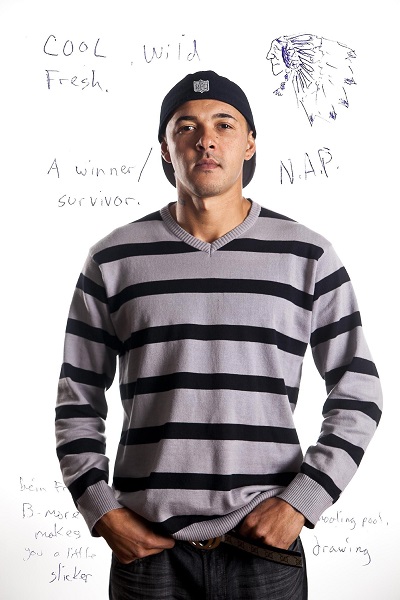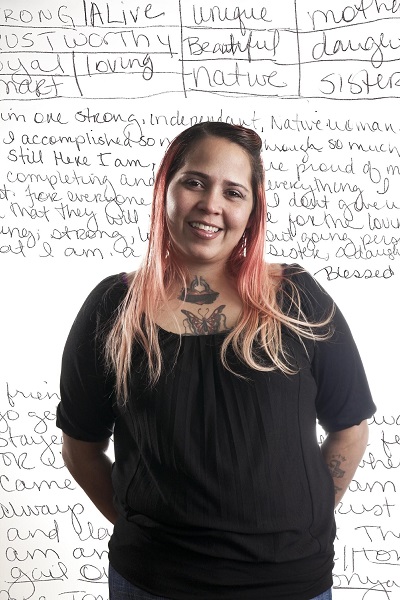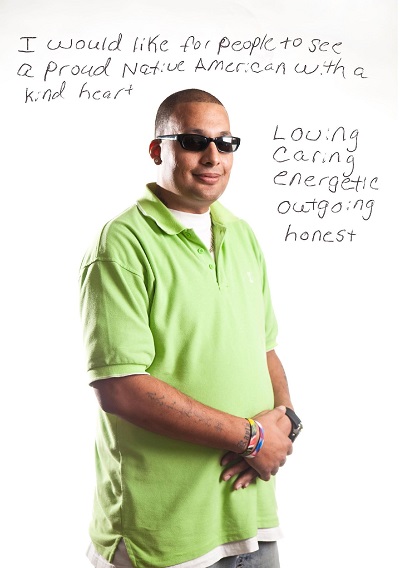|
Lumbee are indigenous to North Carolina but have been present
in Baltimore, Maryland, USA, since before the turn of the 20th century. The Lumbee Tribe of North
Carolina is the largest tribe east of the Mississippi River,
and the ninth largest in the United States. Our homeland is in
southeastern North Carolina, with members residing primarily in Robeson,
Hoke, Cumberland, and Scotland counties. We take our name from the
Lumbee River that winds through tribal territory, which is mostly rural
and otherwise characterized by pines, farmland, and swamps. Following
World War II, thousands of Lumbee Indians migrated from North Carolina
to Baltimore seeking jobs and a better quality of life. They settled on
the east side of town, in an area that bridges the neighborhoods of
Upper Fells Point and Washington Hill.
My grandparents moved here in 1963 with their three children,
one of whom was my mother. I was born here, and that makes me a
first-generation Baltimore Lumbee. I grew up to be a community-based visual
artist and a folklorist. I am currently a doctoral candidate
at the University of Maryland
College Park, where I am finishing my dissertation on the
changing relationship of Lumbee people to the neighborhood in Baltimore
where they first settled. You can read more about my efforts to reconstruct
Baltimore’s Lumbee American Indian ‘reservation’ on The Conversation.
The Exquisite Lumbee Project, 2010
The men and women who were asked to participate in this
project are all part of what I consider to be my generation.
We are close in age. Many of us grew up together and despite different
paths we have chosen for ourselves in life, we are still close and see
each other regularly to this day. Those who agreed to visit the
photography studio were encouraged to wear what they like best. We did
several sessions with different groups of people. Each time, the entire
group would stand behind the camera along with the photographer to
encourage and coach the person whose portrait was being taken. Each
person was given the opportunity to choose the photograph they felt best
represented them. Text incorporated into the portrait, written by us,
gives viewers a glimpse into our hopes for one another and the depths of
ourselves. The
Exquisite Lumbee
book was created to demonstrate that, although we as a people
run the gamut of skin colors, hair colors, and hair textures, we do
have a distinctive quality, character, and style. We recognize each
other. We are exquisite. Following are four portraits from this
series.

Portrait 1. Tonto. Photo by Sean Scheidt, text by Dean Tonto Cox, Sr.

Portrait 2. Tonya. Photo by Sean Scheidt, text by Tonya Gail Oxendine.

Portrait 3. Keith. Photo by Sean Scheidt, text by E. Keith Colston.

Portrait 4.Jeremy. Photo by Sean Scheidt, text by Jeremy Larue
Locklear.
Ashley Minner is a community-based visual artist from
Baltimore, Maryland, USA. An enrolled member of the Lumbee Tribe of
North Carolina, she has been active in the Baltimore Lumbee community
for many years and regularly visits communities throughout the U.S.
South and Latin America as well. Ashley is a professor of the practice
and folklorist in the Department of American Studies at the University
of Maryland Baltimore County, where she also serves as the inaugural
director of the minor in Public Humanities. |

